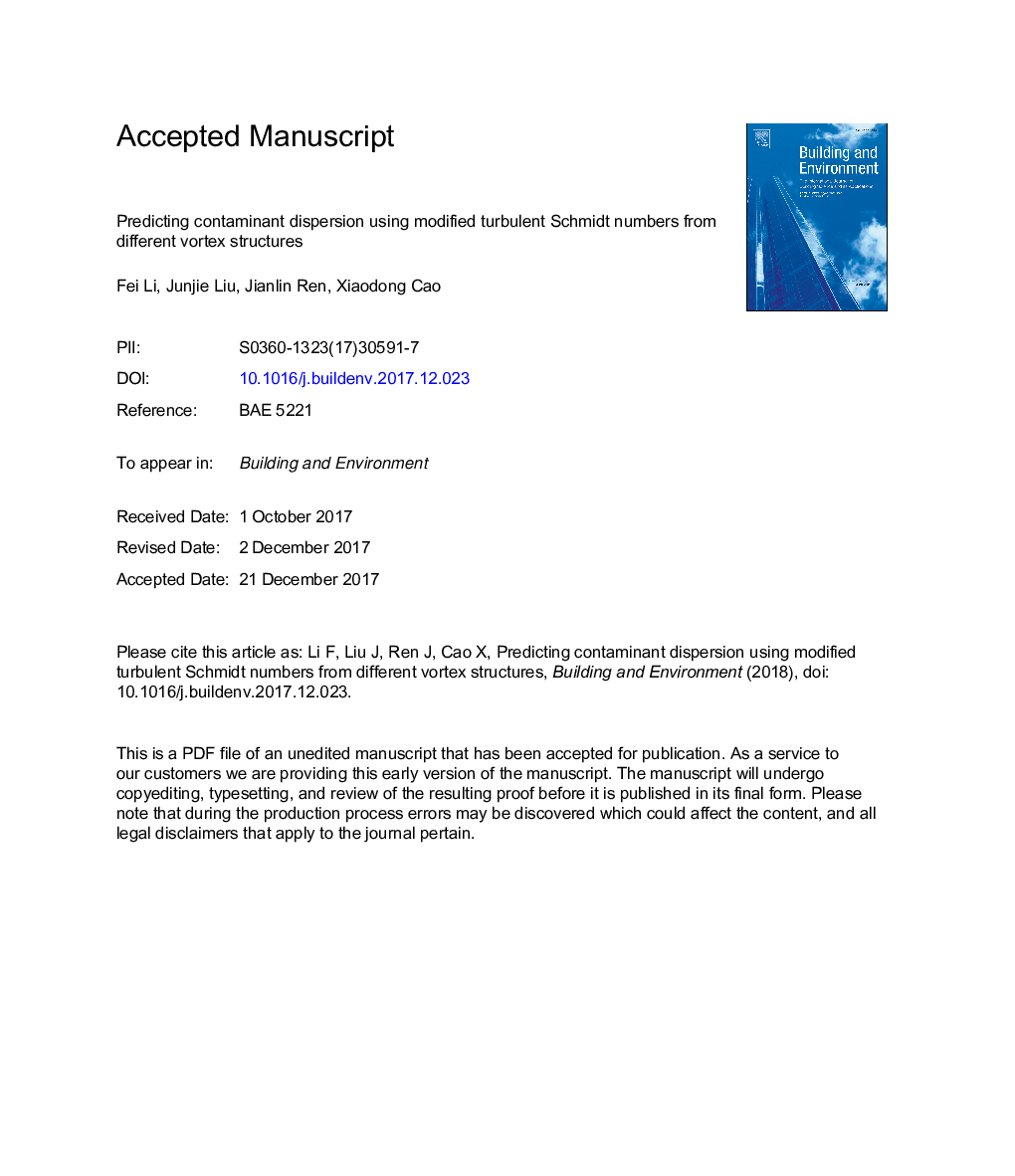| Article ID | Journal | Published Year | Pages | File Type |
|---|---|---|---|---|
| 6698149 | Building and Environment | 2018 | 27 Pages |
Abstract
Air pollutant transmission has significant influences on indoor air quality (IAQ). It is crucial to study mechanisms involved with airborne contaminant dispersion indoors. However, relationship between pollutant diffusion coefficient and viscosity in enclosed spaces has not been fully understood. In this study, turbulent Schmidt number (Sct) was modified as a function of turbulent kinematic viscosity rather than a constant value to better simulate dispersion of airborne contaminant in two typical enclosed spaces: an aircraft cabin and an office room. An experiment for airborne contaminant transmission was conducted in an aircraft cabin mockup. Combining with experimental data in the office room with an under floor air distribution (UFAD) system from literature, Sct was modified based on airflow vortex structures. The performance of RNG k-ε model using the modified Sct was found to be obviously better than that using the default Sct value in both the two enclosed spaces. In addition, model applicability to different enclosed spaces was analyzed based on the airflow vibration frequency.
Related Topics
Physical Sciences and Engineering
Energy
Renewable Energy, Sustainability and the Environment
Authors
Fei Li, Junjie Liu, Jianlin Ren, Xiaodong Cao,
